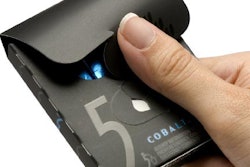
Focus groups and packaging share a long history, one that’s been marked by an inherent contradiction: the too-limited or even absent involvement of the packaging professional, i.e., the packager's employee with a packaging-related title and technical responsibilities.
As expected, on one side of the one-way mirror are the brand managers and other marketing types. They are often joined by package designers, regardless of whether it’s the design firm that’s supplying the facilities and conducting the groups.
But, here’s the question: Given any focus group directed at packaging, why wouldn’t the observers logically include a packaging professional?
It’s not the intent of this article to argue for or against the focus group, nor to compare and contrast it vis-à-vis other methodologies such as surveying and ethnography, nor to present a framework for choosing among them. They are all part of a toolbox, which exists because no single tool has universal utility.
The challenge is always to match tool and need. It’s herein assumed that such a match has been achieved, relative to the focus group. Thus, the objective becomes deriving maximum benefit from the choice.
On being there
The one word that most encapsulates what stands to be gained from a focus group is, insights--about patterns and themes. By definition, insights must go beyond the obvious, their recognition and interpretation the products of the analyst’s acumen.
The prototype effective analyst is a stakeholder who brings relevant knowledge and experience. The description fits the packaging professional as tightly as stretch wrap. By title, he has a stake in decisions that affect packaging, and his (or her) background provides a germane perspective different from, yet complementary to those of marketers and designers. If the packaging professional is left out of focus (groups)—the sessions are deprived of pertinent insights not replicated by other members of the team.
Just how important is the physical presence of the packaging professional, given: (1) every focus group is written up in a report, and (2) most are videotaped? Won't the packaging professional be informed through such means? Yes, and it’s in those situations wherein the packaging professional is told what course is to be taken, in essence, “This is what we want to do. Make it happen.”
Nonetheless, reports and videotapes can’t substitute for being there. The freewheeling nature of a focus group (despite an Outline) frequently results in comments by participants that prompt the observers to want to further explore them right then and there. The moderator is informed and steers the session accordingly. A packaging professional relegated to a report or videotape, may too, be intrigued by a particular comment; however, the opportunity for immediate follow-up has been lost.
That's a needless loss, given the unrelenting need to innovate and bolster packaging’s prowess as a marketing tool and competitive advantage. Whether that prowess is exercised through new or revised packaging, the possibilities graphically and structurally are numerous. The packager shouldn’t reduce them by foregoing the cross-fertilization of ideas that could results from the presence of the packaging professional at focus groups.
On average, focus groups are 1 to 1 1⁄2 hours long. Allowing for repeat sessions—basing decisions on a single session is reckless—they don’t constitute an unaffordable demand on the time of even the busiest packaging professional.
Before showing up
The presence of a packaging professional at a packaging-themed focus group is a good thing, and a prepared packaging professional is even better. Whether the packaging discipline is vested in a single employee or in a multisectioned department, what should be known are the fundamentals of focus groups and under what conditions the company uses them. Regarding any specific session, the attending packaging professional should know the specific objectives.
But why stop there? The packaging professional should be able to participate in the planning stage, particularly in devising the Outline. The length of a focus group accommodates about a half-dozen topical questions. If the packaging professional perceives the need for a certain question, there should be a mechanism through which he can make his case. It comes down to the packaging professional being “in the loop,” instead of out-of-focus.
The degree to which such preparation and participation is achieved depends mostly on the organization chart, internal communication channels, and the culture behind them. With packaging being a service discipline, its sway within the company might not be on a par with that of marketing, but neither should packaging be subservient. The two disciplines are inextricably linked through the packaged product. That shouldn’t be forgotten in structuring and conducting focus groups or in deciding who should participate.
Avoid a narrow focus
Yes, in focus groups devoted to packaging, the packaging professional should play an advisory and active role. After all, the packaging professional is almost certain to be instrumental in carrying out the decisions that stem from the groups.
The connection between participation and implementation should not be limited to focus groups; the same holds for other methodologies that fall under the rubric of packaging design research. That’s particularly true of methodologies that are based on observation, whether at the initial moment-of-truth that occurs at the point-of-purchase or at any of the subsequent moments that occur throughout the packaged product experience. Actually, that experience extends beyond traditional boundaries, thanks to the influence of the sustainability movement and lifecycle analysis.
Which provides a convenient segue into this recognition: packaging is driven by a number of new and lasting trends. They’ve created a knowledge gap on the part of the packager relative to consumer opinions, attitudes, and beliefs and their impact on the purchase decision. Those companies that effectively harness research will see positive results in profits and market share.
With stakes that high, packaging professionals must not be relegated to roles as bystanders.
Before becoming a packaging consultant, Sterling Anthony worked for Fortune 500 food, healthcare, and automotive companies, and has taught packaging at the university level. He welcomes your comments by phone, 313/531-1875 or by e-mail, [email protected]. His Web site is www.pkgconsultant.com.
As expected, on one side of the one-way mirror are the brand managers and other marketing types. They are often joined by package designers, regardless of whether it’s the design firm that’s supplying the facilities and conducting the groups.
But, here’s the question: Given any focus group directed at packaging, why wouldn’t the observers logically include a packaging professional?
It’s not the intent of this article to argue for or against the focus group, nor to compare and contrast it vis-à-vis other methodologies such as surveying and ethnography, nor to present a framework for choosing among them. They are all part of a toolbox, which exists because no single tool has universal utility.
The challenge is always to match tool and need. It’s herein assumed that such a match has been achieved, relative to the focus group. Thus, the objective becomes deriving maximum benefit from the choice.
On being there
The one word that most encapsulates what stands to be gained from a focus group is, insights--about patterns and themes. By definition, insights must go beyond the obvious, their recognition and interpretation the products of the analyst’s acumen.
The prototype effective analyst is a stakeholder who brings relevant knowledge and experience. The description fits the packaging professional as tightly as stretch wrap. By title, he has a stake in decisions that affect packaging, and his (or her) background provides a germane perspective different from, yet complementary to those of marketers and designers. If the packaging professional is left out of focus (groups)—the sessions are deprived of pertinent insights not replicated by other members of the team.
Just how important is the physical presence of the packaging professional, given: (1) every focus group is written up in a report, and (2) most are videotaped? Won't the packaging professional be informed through such means? Yes, and it’s in those situations wherein the packaging professional is told what course is to be taken, in essence, “This is what we want to do. Make it happen.”
Nonetheless, reports and videotapes can’t substitute for being there. The freewheeling nature of a focus group (despite an Outline) frequently results in comments by participants that prompt the observers to want to further explore them right then and there. The moderator is informed and steers the session accordingly. A packaging professional relegated to a report or videotape, may too, be intrigued by a particular comment; however, the opportunity for immediate follow-up has been lost.
That's a needless loss, given the unrelenting need to innovate and bolster packaging’s prowess as a marketing tool and competitive advantage. Whether that prowess is exercised through new or revised packaging, the possibilities graphically and structurally are numerous. The packager shouldn’t reduce them by foregoing the cross-fertilization of ideas that could results from the presence of the packaging professional at focus groups.
On average, focus groups are 1 to 1 1⁄2 hours long. Allowing for repeat sessions—basing decisions on a single session is reckless—they don’t constitute an unaffordable demand on the time of even the busiest packaging professional.
Before showing up
The presence of a packaging professional at a packaging-themed focus group is a good thing, and a prepared packaging professional is even better. Whether the packaging discipline is vested in a single employee or in a multisectioned department, what should be known are the fundamentals of focus groups and under what conditions the company uses them. Regarding any specific session, the attending packaging professional should know the specific objectives.
But why stop there? The packaging professional should be able to participate in the planning stage, particularly in devising the Outline. The length of a focus group accommodates about a half-dozen topical questions. If the packaging professional perceives the need for a certain question, there should be a mechanism through which he can make his case. It comes down to the packaging professional being “in the loop,” instead of out-of-focus.
The degree to which such preparation and participation is achieved depends mostly on the organization chart, internal communication channels, and the culture behind them. With packaging being a service discipline, its sway within the company might not be on a par with that of marketing, but neither should packaging be subservient. The two disciplines are inextricably linked through the packaged product. That shouldn’t be forgotten in structuring and conducting focus groups or in deciding who should participate.
Avoid a narrow focus
Yes, in focus groups devoted to packaging, the packaging professional should play an advisory and active role. After all, the packaging professional is almost certain to be instrumental in carrying out the decisions that stem from the groups.
The connection between participation and implementation should not be limited to focus groups; the same holds for other methodologies that fall under the rubric of packaging design research. That’s particularly true of methodologies that are based on observation, whether at the initial moment-of-truth that occurs at the point-of-purchase or at any of the subsequent moments that occur throughout the packaged product experience. Actually, that experience extends beyond traditional boundaries, thanks to the influence of the sustainability movement and lifecycle analysis.
Which provides a convenient segue into this recognition: packaging is driven by a number of new and lasting trends. They’ve created a knowledge gap on the part of the packager relative to consumer opinions, attitudes, and beliefs and their impact on the purchase decision. Those companies that effectively harness research will see positive results in profits and market share.
With stakes that high, packaging professionals must not be relegated to roles as bystanders.
Before becoming a packaging consultant, Sterling Anthony worked for Fortune 500 food, healthcare, and automotive companies, and has taught packaging at the university level. He welcomes your comments by phone, 313/531-1875 or by e-mail, [email protected]. His Web site is www.pkgconsultant.com.

























